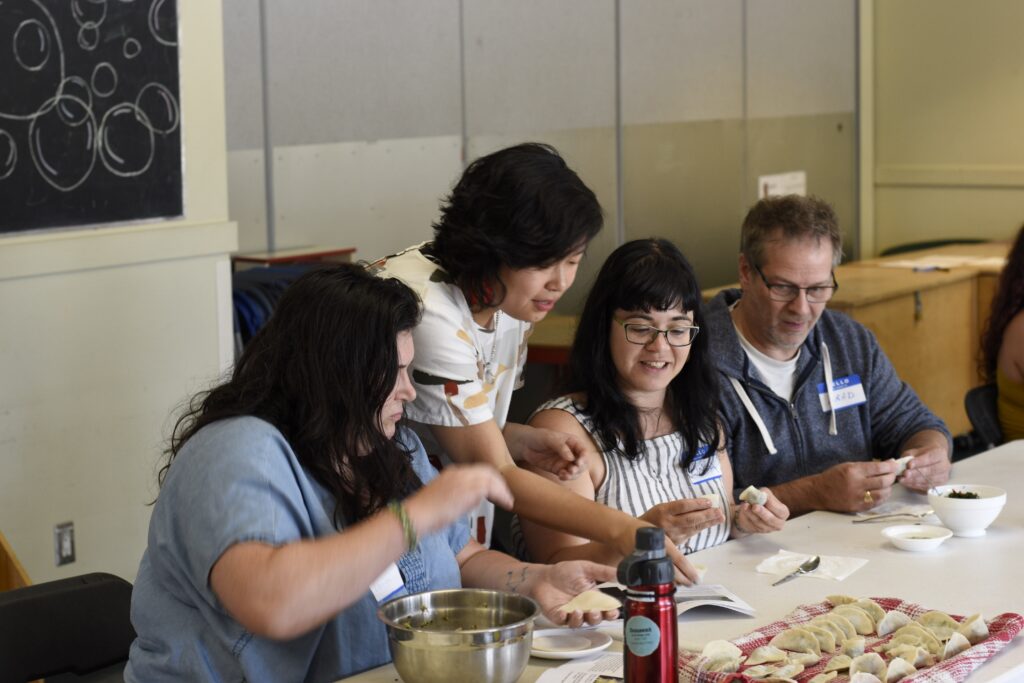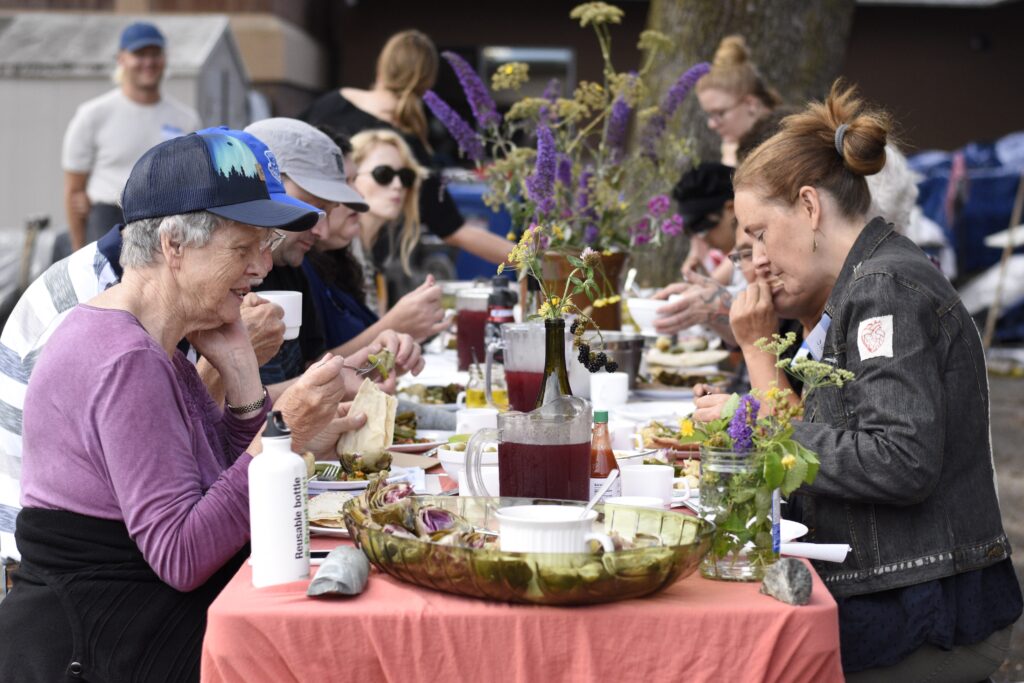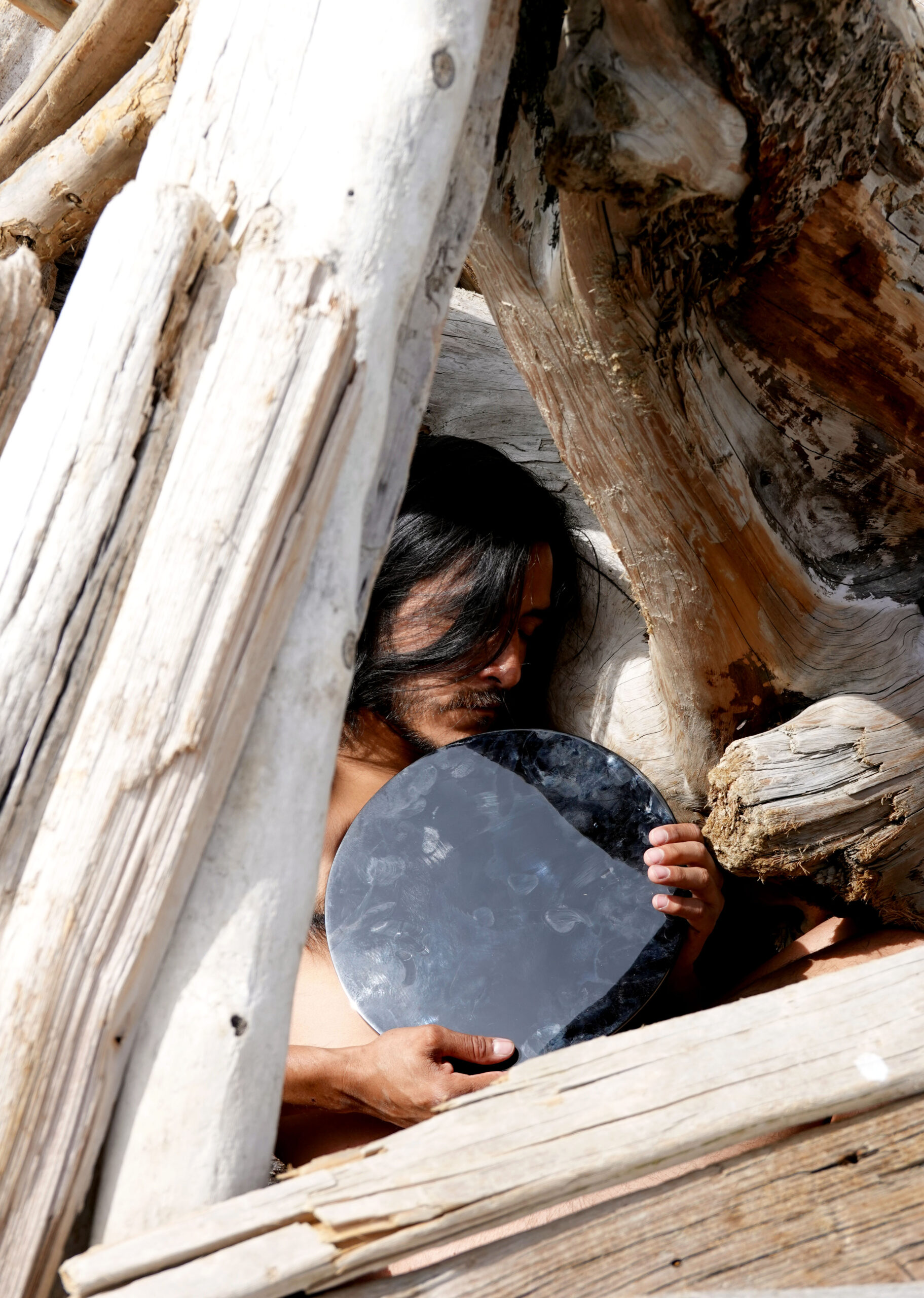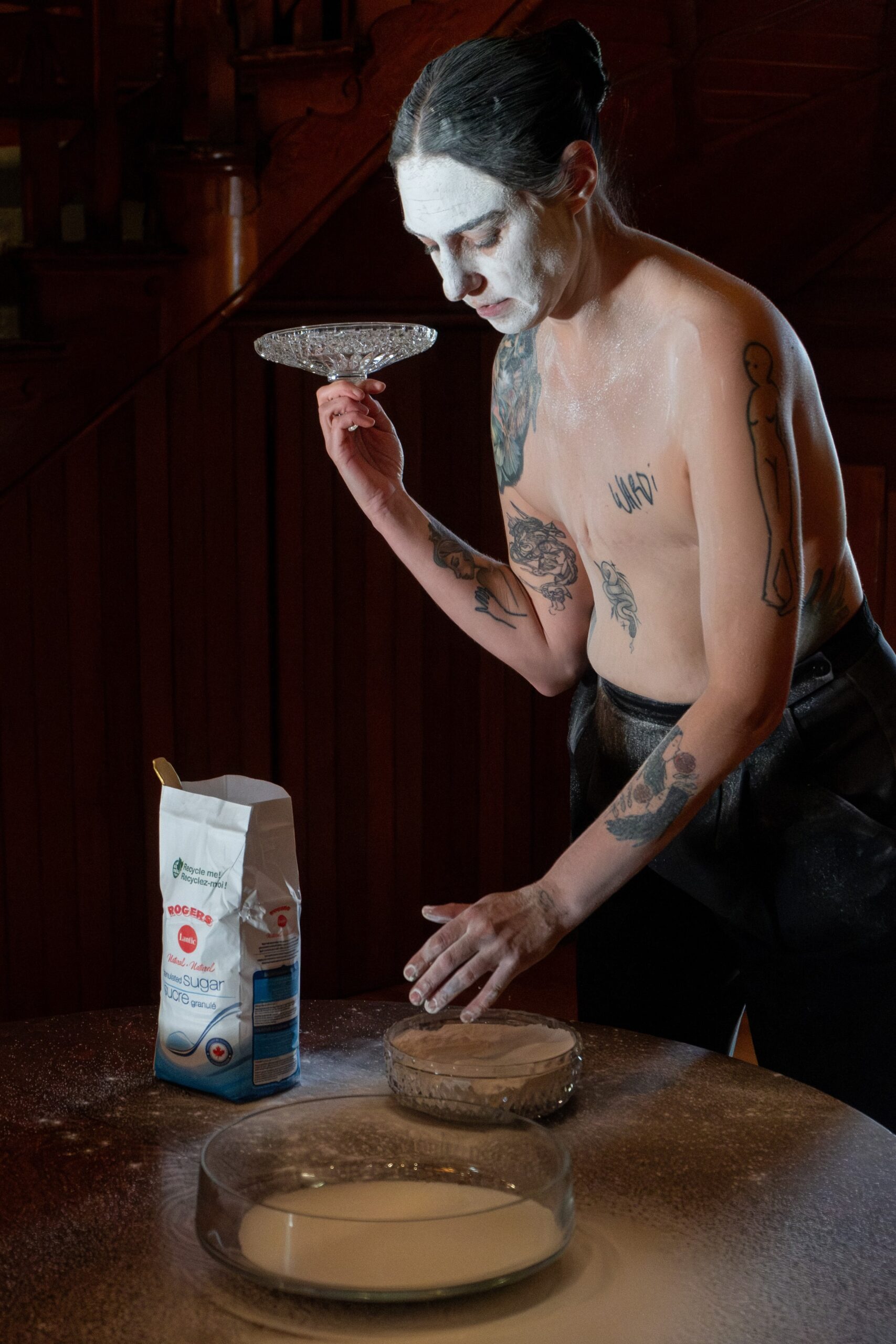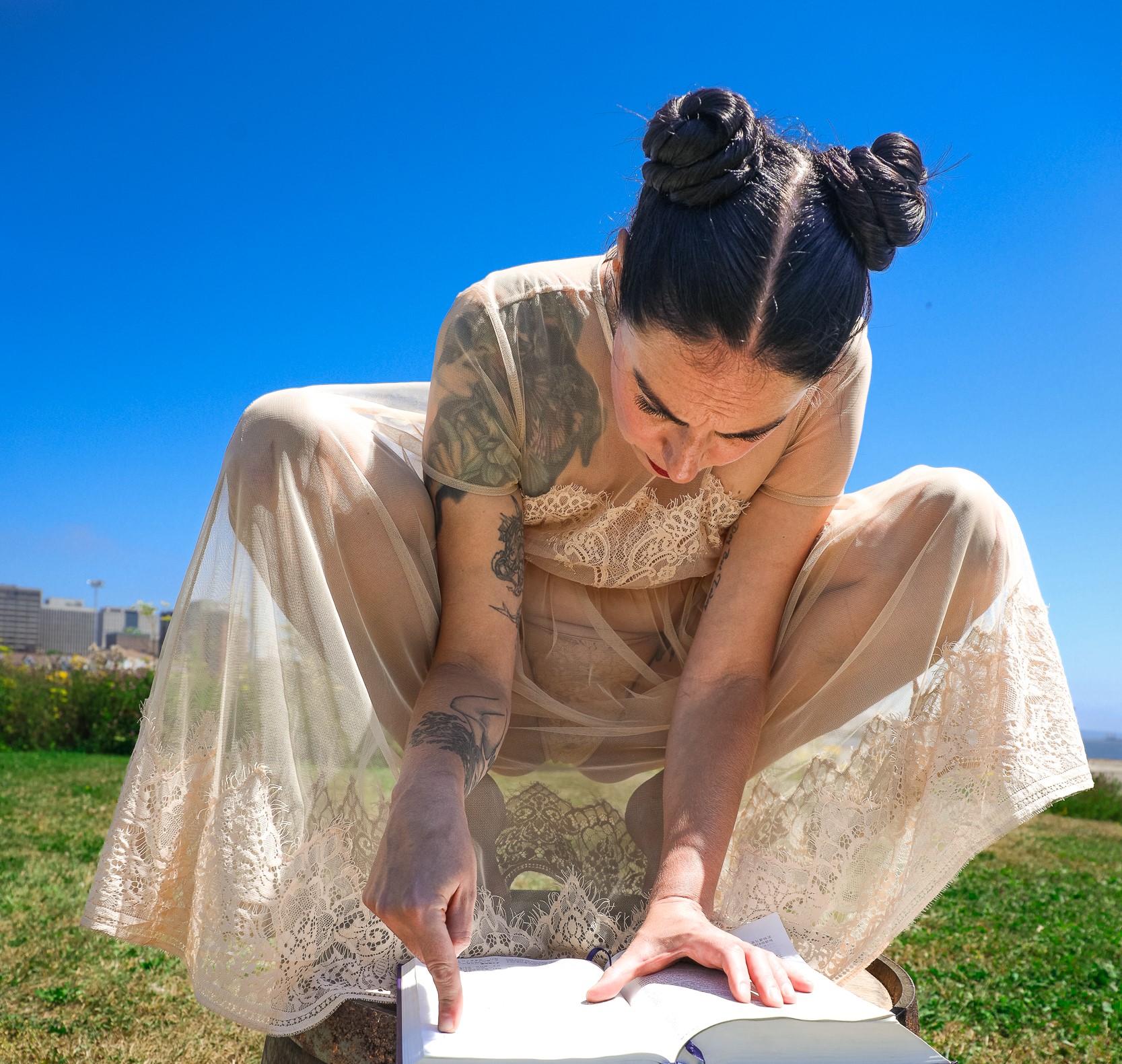By Regan Shrumm, AGGV Assistant Curator
November marked the end of the artistic food workshops, What Artists Bring to the Table. During this series, a common question that kept on emerging was — how is making food an artistic practice?
By Regan Shrumm, AGGV Assistant Curator
November marked the end of the artistic food workshops, What Artists Bring to the Table. During this series, a common question that kept on emerging was — how is making food an artistic practice?
There has been a long history of artists, especially those practicing social art, who have been working with food as a medium. A leading member of the Fluxus artist group, Alison Knowles performed Make a Salad in 1962, where the artists chopped veggies to music, used a plastic tarp to mix all of the ingredients, and then served the salad to passersby. In 1990, Rirkrit Tiranvanija was one of the first artists to cook food in a traditional gallery as an exhibition titled pad thai. Tiranvanija transformed the gallery into a lounge area, set up a kitchen, and cooked and served Pad Thai.
However, the number of artists working with food has been dramatically increased in recent years. In fact, both Knowles’ and Tiranvanija’s performances have been newly regenerated. As curator Berin Golonu explains, “As public attention has increasingly been drawn to the politics of food production and distribution, contemporary practitioners turn such awareness into direct and immediate public actions. As we face the very real threats of devastating climate change, a global food crisis, and oil shortages, they address environmental concerns with unprecedented urgency.”
After five workshops, both the AGGV and participants in the series got a taste of how five BC-based artists have transcended food to focus on the social, cultural, political, and environmental possibilities that food creates.
July – Amanda Huynh
Amanda helping participants make two different types of dumplings. Photo: Adrian Paradis.
Amanda Huynh asked participants to think about the future of food, especially on how food will change with shifting environments, immigrating peoples, and evolving technologies. Amanda had her work on display in an exhibition titled
Edible Futures: Food for Tomorrow, curated by the Dutch Institute of Food and Design. In
Edible Futures, Amanda felt that the future of foods still needs to have link to the past formats of food. Since every culture has its own dumplings, we are all familiar with what a dumping can look, feel, and taste like. Amanda made dumplings fillings from indigenous plants to acknowledge how we need to regain our knowledge of local plants it is increasingly important for our survival.
For your own local dumplings, check out
Dumpling Drop, a dumpling delivery service based in Victoria’s Chinatown.
August- Alexis Hogan
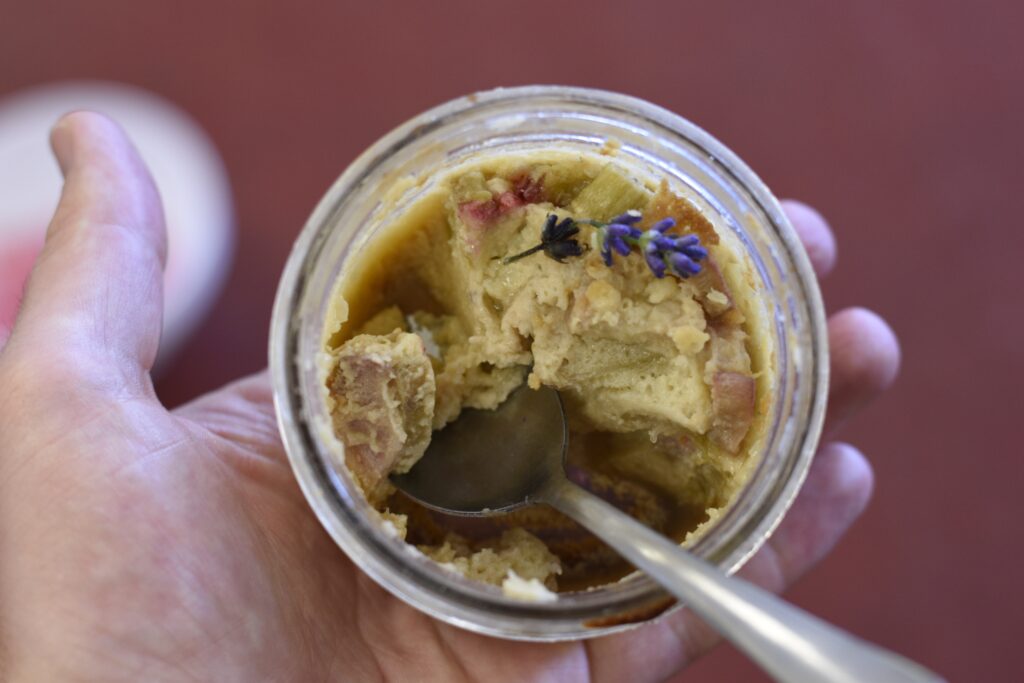 Alexis’ rhubarb custard pots were eaten during a discussion on medicine and poison. Photo: Adrian Paradis.
Alexis’ rhubarb custard pots were eaten during a discussion on medicine and poison. Photo: Adrian Paradis.
During her workshop, Alexis Hogan drew upon her work in the immersive and relational elements of social practice by using specific foods as thematic, affective prompts for storytelling. She introduced four main ingredients by sharing some of their histories, cultural mythologies and symbolism. Themes paired with dishes included Himalayan blackberry coulis and “origin stories”; rhubarb custard pots and “medicine & poison”; strawberries and “travel”; and lavender-infused lemonade and “stories we tell to calm ourselves.”
Participants gathered around our the outdoor picnic tables to eat discounted food. Photo: Adrian Paradis.
Derya Akay, Vivienne Bessette, and Kurtis Wilson got participants to explore alternative means of producing food. The food for their September workshop was comprised of dollar bag products or veggies and fruit which are on the verge of being thrown out, but instead, are discounted. We bought our food from at:
· Tomley’s Market – 716 Johnson Street
· Zero Waste Emporium – 1728 Douglas Street
· Wellburn’s Market – 1058 Pandora Avenue
· The Rootcellar – 1286 McKenzie Avenue
· Victoria West Community Orchard – 521 Craigflower Rd
· Free fruit offered around the neighbours of Vic West and Oaklands – A great way to navigate this is through Falling Fruit
While participants collectively made cider together using Elisa Rathje’s apples from her 150-year-old orchard, Elisa discussed slow, eco-living. She explained how we often are urged to continuously work, therefore making it hard to face the climate emergency before us. By taking the few extra minutes to walk or cycle, we slow down and pay attention to our surrounding landscape and bodies. Through slow food, we realize where the food comes from and how quickly it needs to be preserved to survive. Elisa explained the urgency to slow down streams of consumption, simplify needs, and pare down our busy lives.
November – Samantha Radons
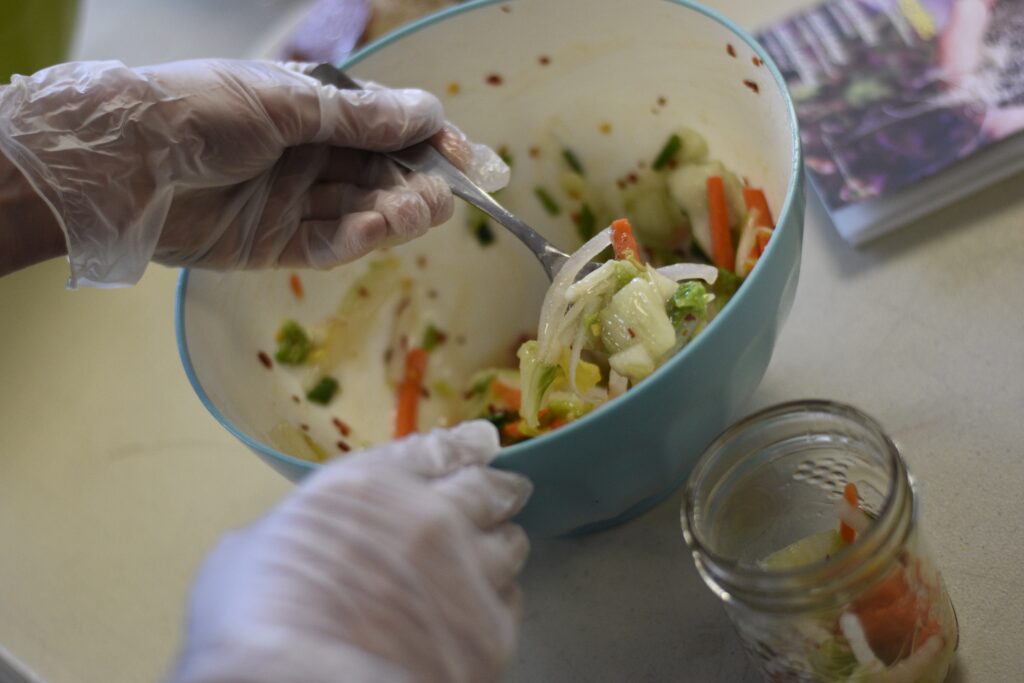 Participants filled up their jars with fermented veggies. Photo: Adrian Paradis.
Participants filled up their jars with fermented veggies. Photo: Adrian Paradis.
Samantha Radons shared some of her knowledge about the history and basic science of a range of different fermented food- from sourdough to salami. Together participants fermented veggies using a lacto-fermentation process, where bacteria break down the sugars in from a rice paste mixed with the veggies and form lactic acid.
Feature image: Elisa demonstrating how to use the cider press. Photo: Adrian Paradis.
 Alexis’ rhubarb custard pots were eaten during a discussion on medicine and poison. Photo: Adrian Paradis.
Alexis’ rhubarb custard pots were eaten during a discussion on medicine and poison. Photo: Adrian Paradis. Participants filled up their jars with fermented veggies. Photo: Adrian Paradis.
Participants filled up their jars with fermented veggies. Photo: Adrian Paradis.
